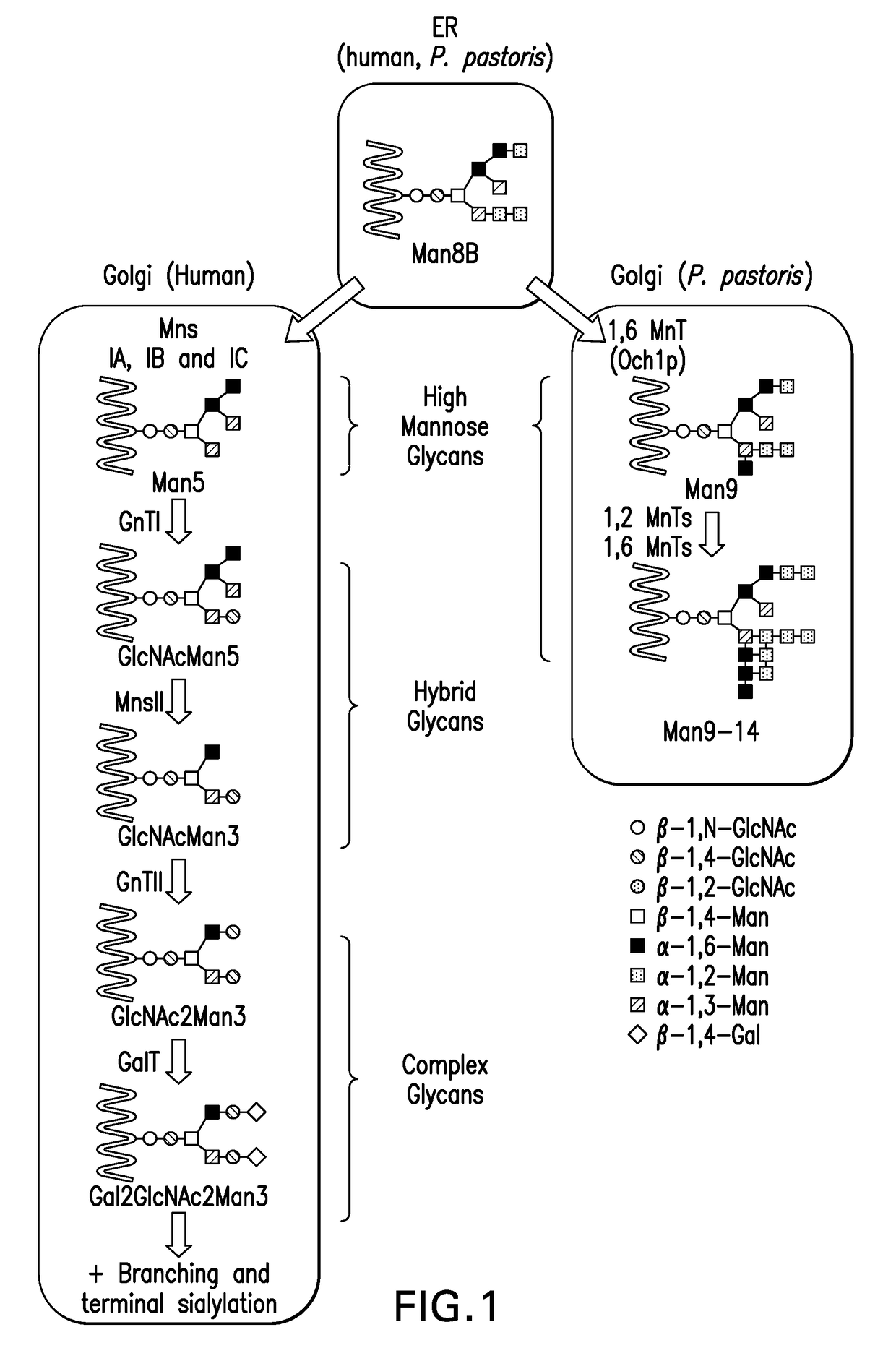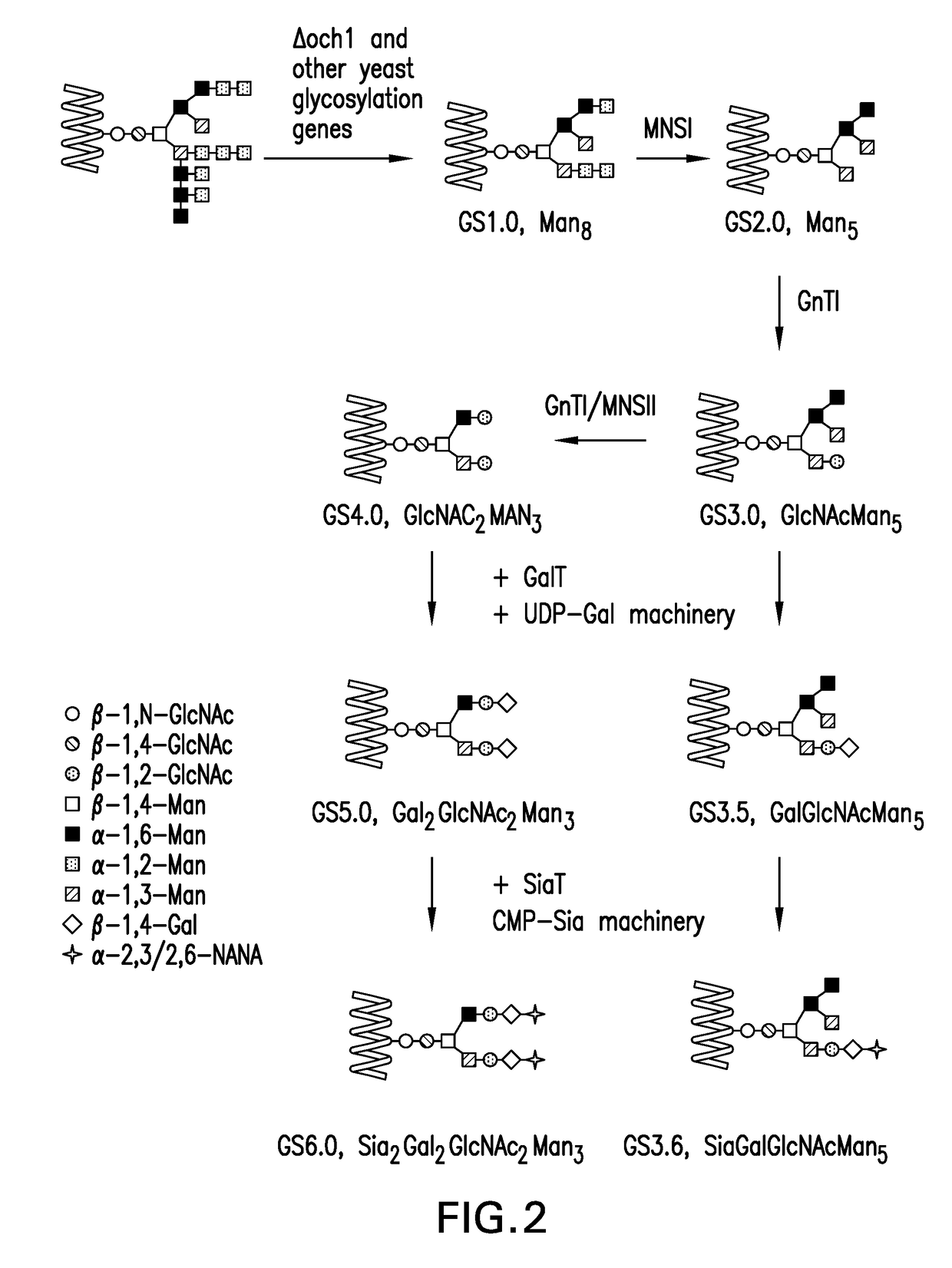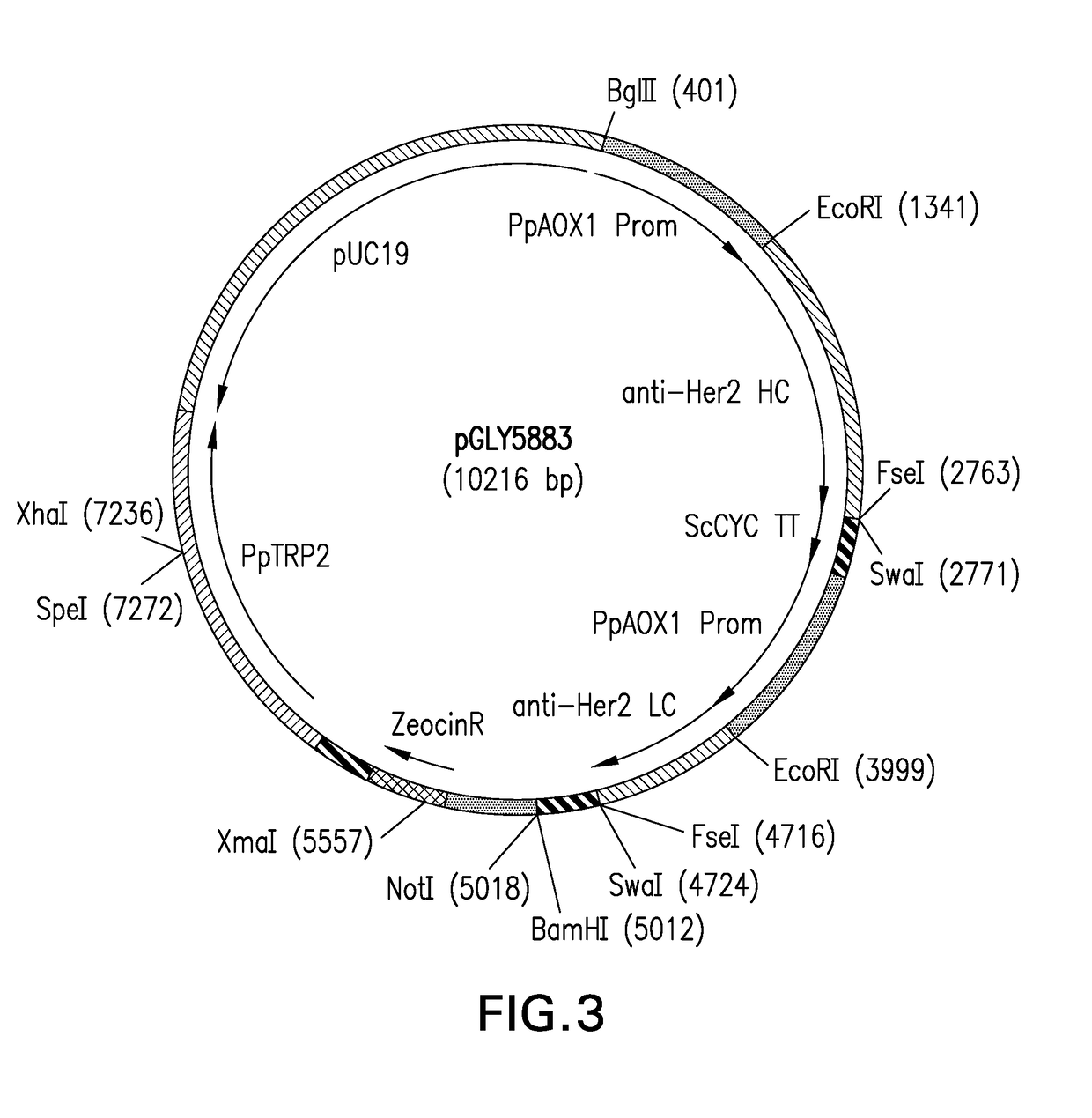Glycan-based antibody-drug conjugates
a technology of antibody-drug conjugates and glycans, which is applied in the field of engineered immunoglobulins, can solve the problems of insufficient n-glycan occupancy, insufficient n-glycan occupancy, and inability to efficiently kill target cells, etc., and achieve the effect of high degree of n-glycan occupancy
- Summary
- Abstract
- Description
- Claims
- Application Information
AI Technical Summary
Benefits of technology
Problems solved by technology
Method used
Image
Examples
example 1
n of Anti-Her2 with Non-Native N-Glycan-Incorporating Site-Directed Alterations
[0271]The anti-HER2 (trastuzumab) IgG1 H chain and L chain sequences (Seq ID NO: 1 and 2, respectively) were incorporated into a single ZeoR-marked, TRP2-integrating Pichia pastoris roll-in expression plasmid, each as part of separate AOX1-driven expression cassettes containing the Saccharomyces cerevisiae alpha factor pre signal sequence (Seq ID NO: 3) to generate plasmid pGLY5883 (FIG. 3; SEQ ID NO: 4). Site-directed mutations were then designed based on desirable locations within the H chain. These locations were chosen as sites that would: 1) be within or near loop or where a side chain was solvent exposed to not disrupt an Ig-fold, 2) not be near critical sites related to mAb function (e.g. Ag-binding, FcRN binding, FcγR-binding), and 3) be converted to an N-glycan sequon with a minimum of primary sequence modification. Initially 8 sites were chosen to test whether non-native N-glycosylation sites ca...
example 2
tor Cultivation of N-Glycan Site Engineered Anti-Her2 Antibody-Producing Clones
[0274]Representative clones from the seven constructs that yielded fully folded antibody were cultivated in an Applikon (Foster City, Calif.) micro24 5 ml mini-fermenter apparatus. Seed cultures were prepared by inoculating strains from YSD plates to a Whatman 24-well Uniplate (10 ml, natural polypropylene) containing 3.5 ml of 4% BMGY medium (Invitrogen, Carlsbad, Calif.) buffered to pH 6.0 with potassium phosphate buffer. The seed cultures were grown 65-72 hours in a temperature controlled shaker at 24° C. and 650 rpm agitation. 1.0 ml of the 24 well plate grown seed culture and 4.0 ml of 4% BMGY medium was then used to inoculate each well of a Micro24 plate (Type:REG2). 30 ml of Antifoam 204 (1:25 dilution, Sigma Aldrich) was added to each well. The Micro24 was operated in Microaerobicl mode and the fermentations were controlled at 200% dissolved oxygen, pH at 6.5, temperature at 24° C. and agitation a...
example 3
r Expression and Purification of Non-Native N-Glycosylation Site Engineered Anti-HER2 Antibody
[0278]Representative clones from the six constructs that yielded fully folded antibody with a well-occupied non-native N-glycosylation site (See Table 1) were cultured in 1 L Fedbatch Pro fermenters (DASGIP Biotools, Shrewsbury, Mass.) using a glycerol fedbatch and methanol induction similarly to what has been described previously (Hopkins, 2011), with the notable difference of using a dissolved oxygen (DO) limited fed-batch induction paradigm. Briefly, inocula derived from yeast patches (isolated from a single colony) on agar plates were cultivated in 0.5 L baffled seed flasks in 0.1 L of 4% BSGY (without maltitol, table 2). Seed flasks were grown at 180 rpm and 24° C. (Innova 44, New Brunswick Scientific) for 48 hours. Bioreactor vessels were charged with 0.6 L of 0.2 μm filtered 4% BSGY media (plus 4 drops / L Sigma 204 antifoam, Table 2) and autoclaved at 121° C. for 45 minutes.
TABLE 2Med...
PUM
| Property | Measurement | Unit |
|---|---|---|
| Volume | aaaaa | aaaaa |
| Volume | aaaaa | aaaaa |
| Volume | aaaaa | aaaaa |
Abstract
Description
Claims
Application Information
 Login to View More
Login to View More - R&D
- Intellectual Property
- Life Sciences
- Materials
- Tech Scout
- Unparalleled Data Quality
- Higher Quality Content
- 60% Fewer Hallucinations
Browse by: Latest US Patents, China's latest patents, Technical Efficacy Thesaurus, Application Domain, Technology Topic, Popular Technical Reports.
© 2025 PatSnap. All rights reserved.Legal|Privacy policy|Modern Slavery Act Transparency Statement|Sitemap|About US| Contact US: help@patsnap.com



